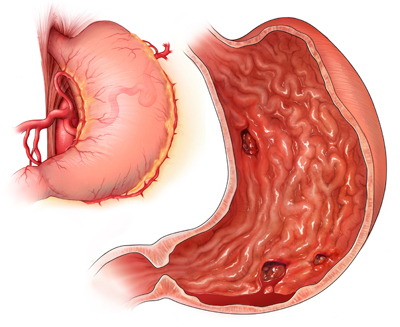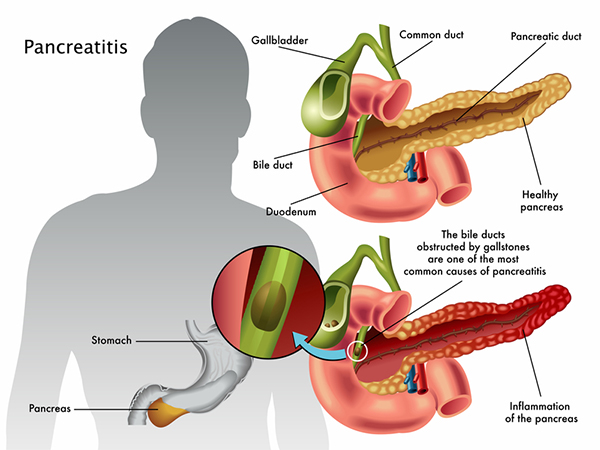Gastroenterology
 Gastroenterology (MeSH heading) is a branch of medicine focused on the digestive system and its disorders. In the United States, Gastroenterology is an Internal Medicine Subspecialty certified by the American Board of Internal Medicine (ABIM) and the American Osteopathic Board of Internal Medicine (AOBIM).
Gastroenterology (MeSH heading) is a branch of medicine focused on the digestive system and its disorders. In the United States, Gastroenterology is an Internal Medicine Subspecialty certified by the American Board of Internal Medicine (ABIM) and the American Osteopathic Board of Internal Medicine (AOBIM).
affecting the gastrointestinal tract, which includes the organs from mouth to anus, along the alimentary canal, are the focus of this specialty. Physicians practicing in this field of medicine are called gastroenterologists. They have usually completed the eight years of pre-medical and medical education, the year-long internship (if this is not a part of the residency), three years of an internal medicine residency, and two to three years in the gastroenterology fellowship. Some gastroenterology trainees will complete a “fourth-year” (although this is often their 7th year of graduate medical education) in Transplant Hepatology, Advanced Endoscopy, Inflammatory Bowel Disease (IBD), motility or other topics.
 Gastroenterology is not the same as colorectal or hepatobiliary surgery, which are specialty branches of general surgery.
Gastroenterology is not the same as colorectal or hepatobiliary surgery, which are specialty branches of general surgery.
Hepatology, or hepatobiliary medicine, encompasses the study of the liver, pancreas, and biliary tree, and is traditionally considered a sub-specialty.
Citing from Egyptian papyri, Nunn identified significant knowledge of gastrointestinal diseases among practising physicians during the periods of the pharaohs. Irynakhty, of the tenth dynasty, c. 2125 B.C., was a court physician specialising in gastroenterology, sleeping, and proctology.
 Among ancient Greeks, Hippocrates attributed digestion to concoction. Galen’s concept of the stomach having four faculties was widely accepted up to modernity in the seventeenth century.
Among ancient Greeks, Hippocrates attributed digestion to concoction. Galen’s concept of the stomach having four faculties was widely accepted up to modernity in the seventeenth century.
Eighteenth century :
- Italian Lazzaro Spallanzani (1729–99) was among early physicians to disregard Galen’s theories, and in 1780 he gave experimental proof on the action of gastric juice on foodstuffs.
- In 1767, German Johann von Zimmermann wrote an important work on dysentery.
- In 1777, Maximilian Stoll of Vienna described cancer of the gallbladder.
Nineteenth century :
- In 1805, Philipp Bozzini made the first attempt to observe inside the living human body using a tube he named Lichtleiter (light-guiding instrument) to examine the urinary tract, the rectum, and the pharynx. This is the earliest description of endoscopy.
- Charles Emile Troisier described enlargement of lymph nodes in abdominal cancer.
- In 1823, William Prout discovered that stomach juices contain hydrochloric acid.
- In 1868, Adolf Kussmaul, a well-known German physician, developed the gastroscope. He perfected the technique on a sword swallower.
- In 1871, at the society of physicians in Vienna, Carl Stoerk demonstrated an esophagoscope made of two telescopic metal tubes, initially devised by Waldenburg in 1870.
- In 1876, Karl Wilhelm von Kupffer described the properties of some liver cells now called Kupffer cell.
- In 1883, Hugo Kronecker and Samuel James Meltzer studied oesophageal manometry in humans.
- In 1915, Jesse McClendon tested acidity of human stomach in situ.
- In 1921-22,Walter Alvarez did the first electrogastrography research.
- Rudolph Schindler described many important diseases involving the human digestive system during World War I in his illustrated textbook and is portrayed by some as the “father of gastroscopy”. He and Georg Wolf developed a semiflexible gastroscope in 1932.
- In 1932, Burrill Bernard Crohn described Crohn’s disease.
- In 1957, asil Hirschowitz introduced the first prototype of a fibreoptic gastroscope.
 Twentieth century :
Twentieth century :
- In 1915, Jesse McClendon tested acidity of human stomach in situ.
- In 1921-22, electrogastrography research.
- Rudolph Schindler described many important diseases involving the human digestive system during World War I in his illustrated textbook and is portrayed by some as the “father of gastroscopy”. He and Georg Wolf developed a semiflexible gastroscope in 1932.
- In 1932, described Crohn’s disease.
- In 1957, introduced the first prototype of a fibreoptic gastroscope.
Twenty-first century:
- In 2005, Barry Marshall and of Australia were awarded the Nobel Prize in Physiology or Medicine for their discovery of Helicobacter pylori (1982/1983) and its role in peptic ulcer disease. James Leavitt assisted in their research, but the Nobel Prize is not awarded posthumously so he was not included in the award.
